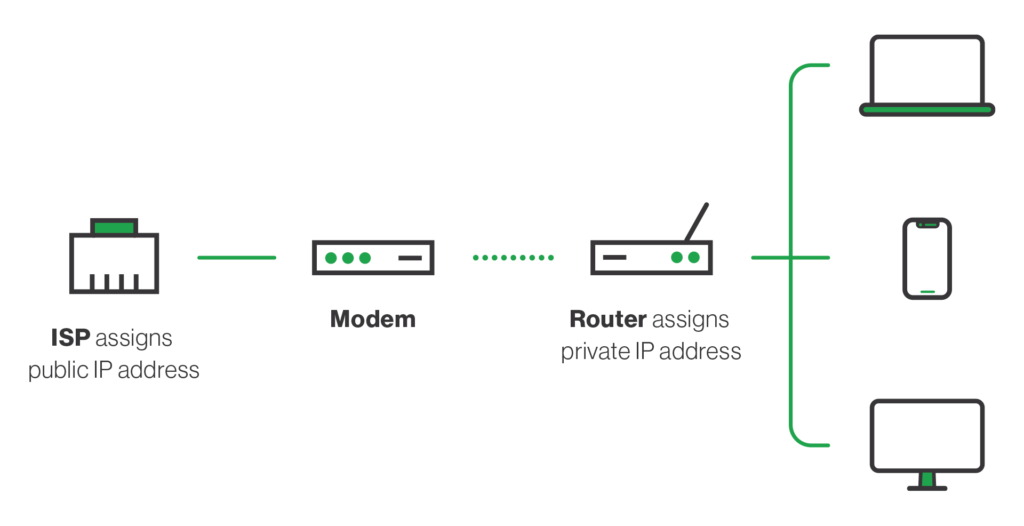Introduction:
In today’s interconnected world, communication and data exchange play a vital role in our daily lives. Whether we’re browsing the web, sending emails, streaming videos, or playing online games, the seamless transfer of data relies on a fundamental component known as an IP address. In this article, we’ll delve into the concept of IP addresses, exploring their significance, structure, types, and the role they play in shaping the modern internet.
What is an IP Address?
An IP address, short for Internet Protocol address, is a unique numerical label assigned to every device connected to a computer network that uses the Internet Protocol (IP) for communication. It serves as an identifier, enabling devices to locate and communicate with each other within a network or across the vast expanse of the internet.
IP Address Structure:
IP addresses consist of four sets of numbers separated by periods (e.g., 192.168.1.1). Each set can range from 0 to 255, and the whole address represents a 32-bit binary number. There are two main IP address versions in use today, IPv4 (Internet Protocol version 4) and IPv6 (Internet Protocol version 6), with the latter introduced to address the exhaustion of IPv4 addresses.
IPv4 vs. IPv6:
IPv4, being the earlier version, uses 32 bits and can accommodate around 4.3 billion unique IP addresses. However, due to the exponential growth of the internet and the proliferation of connected devices, IPv4 addresses have nearly exhausted. IPv6, on the other hand, uses 128 bits, allowing for an astronomical number of unique addresses, roughly 340 undecillion (3.4 x 10^38). IPv6 adoption is gaining momentum, and it promises to solve the scarcity of IP addresses.
Public and Private IP Addresses:
IP addresses can be classified into public and private addresses. Public IP addresses are assigned by Internet Service Providers (ISPs) to individual devices to make them accessible over the internet. In contrast, private IP addresses are used within local networks (like home or office) and are not directly accessible from the internet. Network Address Translation (NAT) allows private IP addresses to communicate with the internet using a single public IP address.
DHCP and Static IP Addresses:
Dynamic Host Configuration Protocol (DHCP) is a mechanism that dynamically assigns IP addresses to devices when they connect to a network. It helps manage IP address allocation efficiently. In contrast, static IP addresses are manually assigned to devices and remain constant over time. Static IPs are commonly used for servers, routers, and other network devices that require consistent addressing.
IP Address Geolocation:
IP addresses can reveal information about the geographical location of a device. Geolocation services use databases to associate IP addresses with specific geographic regions, enabling various applications like targeted advertising, content localization, and fraud detection.
IP Address and Networking:
Understanding IP addresses is crucial for network administrators and IT professionals. It plays a vital role in routing data packets across the internet, ensuring that they reach their intended destination. Subnetting and CIDR notation are essential concepts for managing IP address allocation within networks.
IP Address Security and Privacy:
IP addresses can be used for both benign and malicious purposes. On the one hand, they aid in tracking online activities for security purposes. On the other hand, they can be exploited for privacy breaches or cyber attacks. Concepts like VPNs (Virtual Private Networks) and proxy servers help protect user privacy by masking IP addresses.
IPv6 Adoption and Challenges:
Despite the advantages of IPv6, its widespread adoption has been gradual due to various challenges like compatibility issues, cost of implementation, and the inertia of existing IPv4 infrastructure. We explore the efforts made to accelerate IPv6 adoption and the importance of transitioning to this newer protocol.
Future of IP Addresses:
As technology evolves and the number of connected devices continues to grow, the demand for IP addresses will increase exponentially. We discuss potential solutions, such as IP address-sharing techniques and innovations in networking technologies, to meet the demands of the future.
Conclusion:
IP addresses form the backbone of the internet, allowing devices to communicate and exchange data across the globe. Understanding their structure, types, and significance is essential for both tech enthusiasts and professionals. As the internet continues to shape our world, the continued development and adoption of IP address technology will remain a crucial aspect of a connected future.






